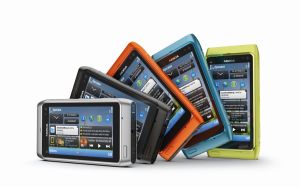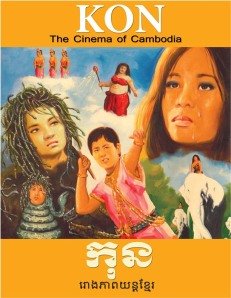PRESS RELEASE
Phnom Penh, 28 October 2010
Since the official opening of its representative office in Phnom Penh last July, Nokia International OY (Cambodia) has continued to demonstrate its commitment to deliver new
experiences and knowledge by bringing in the latest advanced range of devices and solutions.
The two latest smartphones, named Nokia N8 and C7 were launched today to more than 40 media representatives, bloggers and local dealers. N8 and C7 are a powerful combination of internet, video, photos, music with Symbian operating system. “We understand the mobile phone customers’ needs in Cambodia and we aim to bring the latest innovation and technology to them. The launch of N8 and C7 devices today allows Nokia to deliver greater value and relevance towards the hi-end segment of the Cambodian consumers”, said William Hamilton-Whyte, General Manager of Nokia Indochina. On that occasion, local media, bloogers and dealers had hands on experience of the N8 & C7 with internet, photo and video editing features. “Our commitment is to bring real value and relevance in all of the markets where Nokia is present. This remains the goal and the promise of the Nokia brand that is to connect people in newer and better ways,” added William Hamilton-Whyte.
With a population of 14 million, Cambodia has nearly 4 million mobile users, representing 26 percent of the population, according to the United Nations Development Program’s 2009 report, “Cambodia Country Competitiveness”. Beyond that, mobile phones have had a great impact on mobilizations and collective actions, during the biggest events in Cambodia for an example. The people use SMS text messaging for blessing, sharing latest news, nice video, photos or music. They satyed close to their friends and families, connected to the world. Talking with the latest mobile phone is the young Cambodian generation’s stylist.
“Cambodian market is on the move with 9 active telecommunications providers. Nokia N8 & C7 are the first Nokia smartphone based on the Symbian^3 software, and we believe it is a great devices for people in Cambodia who want to create amazing content, connect to their favourite social networks and be entertained with the latest on demand Web TV programme and Ovi Store apps,” commented Mohammed (Md.) Mesbahuddin, Business Development Manager for Nokia Cambodia and Laos.
The Nokia N8 has been designed with a 12 megapixel camera with Carl Zeiss optics, Xenon flash and a large sensor that rivals those found in compact digital cameras. Additionally, the Nokia N8 offers the ability to make HD-quality videos and edit them with an intuitive built-in editing suite. Doubling as a portable entertainment center, you can enjoy HD-quality video with Dolby Digital Plus surround sound by plugging into their home theatre system. Not just a phone, N8 enables access to Web TV services that deliver programs, news and entertainment from channels like CNN, E! Entertainment, Paramount and National Geographic. You can update your status, share location and photos, and view live feeds from Facebook and Twitter in a single app directly on the home screen. Calendar events from social networks can also be transferred to the device calendar. Available from November 2010 at a retailed price of US$500 plus, Nokia N8 is a 3G phone which is available in five colors such as dark grey, silver white, green, blue and orange.
The Nokia C7 is a beautifully crafted smartphone with excellent social networking and sharing capabilities. The 3.5 inch full-touch AMOLED display is ideal for getting live updates from Facebook and Twitter directly to the home screen via the dedicated Social Client. It also enables easy messaging through many popular email accounts including Ovi, as well as quick access to the latest apps from Ovi Store, millions of tracks through Ovi Music and free voiceguided navigation with Ovi Maps. The Nokia C7 will be available in black, metal and brown at an estimated retail price of US$450 plus.
About Nokia
At Nokia, we are committed to connecting people. We combine advanced technology with personalized services that enable people to stay close to what matters to them. Every day, more than 1.3 billion people connect to one another with a Nokia device – from mobile phones to advanced smartphones and high-performance mobile computers. Today, Nokia is integrating its devices with innovative services through Ovi (www.ovi.com), including music, maps, apps, email and more. Nokia’s NAVTEQ is a leader in comprehensive digital mapping and navigation services, while Nokia Siemens Networks provides equipment, services and solutions for communications networks globally.
Media enquiries
Sokun Y
Tel. +855 77 555 689
Email: [email protected]
Noy Chum
Tel. +855 12 714 211
Email: [email protected]


